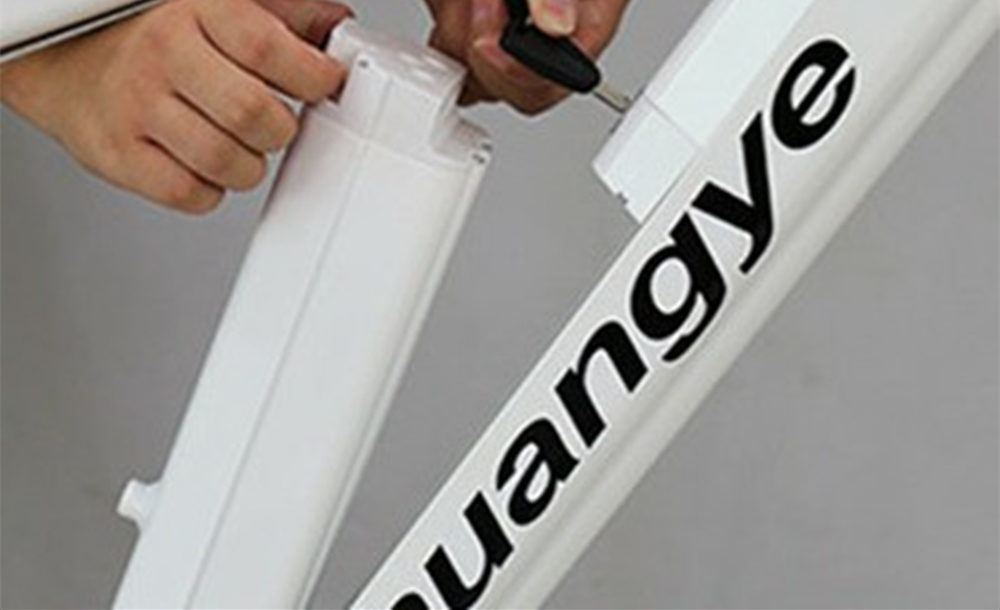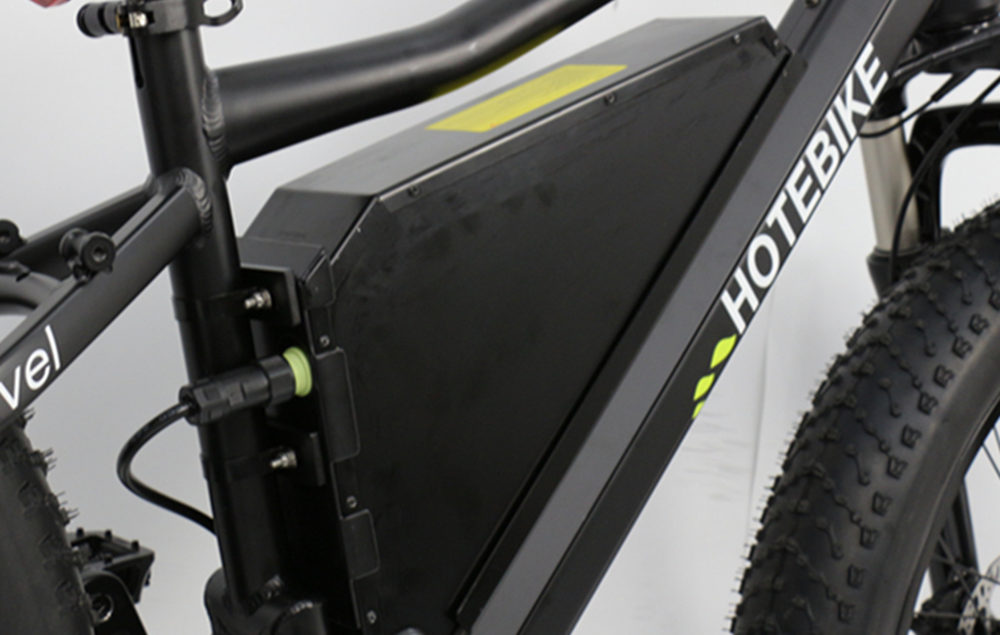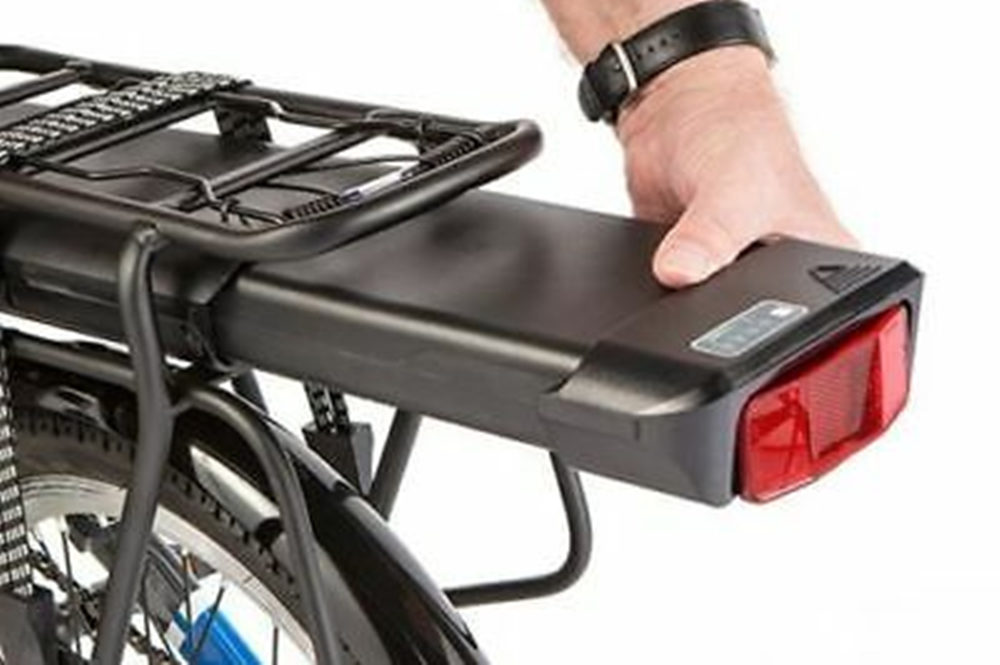Electric bicycle battery: lithium battery lead-acid battery

Lithium Electric Bike Batteries vs Lead Acid Batteries When it comes to electric bike batteries, you have two main options: Lithium and Lead Acid. Of course, there are some other types of e-bike batteries, but the main two you’ll see everywhere are still lithium and lead acid. Of course, lithium and lead-acid batteries each have their own unique advantages and disadvantages, and understanding the differences will help you decide which electric bicycle battery is best for your e-bike.
Electric bicycle lithium battery
There are many different types of electric bike lithium batteries to choose from. I’ll give a brief summary of the different types of lithium batteries for e-bikes here, but you can get a more detailed description and the pros and cons of each in my article Not All Lithium Batteries Are Created Equal.
Lithium Iron Phosphate (LiFePO 4 )
LiFePO4 batteries are some of the heaviest and most expensive lithium batteries, but also the safest and longest-lasting.
Lithium Manganese Oxide (LiMn 2 O 4 ) and Lithium Nickel Manganese Cobalt Oxide (LiNiMnCoO 2 )
LiMn 2 O 4 and LiNiMnCoO2 batteries belong to the mid-range of lithium batteries in terms of size, weight, safety, life and cost. They are a good middle ground in almost every way.
RC Lithium Polymer Battery (RC LiPo)
LiPo is the smallest, cheapest, lightest and most powerful lithium battery. Their downsides include a short lifespan and the tendency to burn into giant fireballs if not handled properly (I’m not kidding, check out the short video clip below).
The benefits of lithium batteries
Now that we have summarized the different types of Lithium batteries, let’s see how these Lithium batteries stack up as a whole.
One of the first advantages of lithium batteries is their small size. You can pack a lot of lithium on a bike frame. That alone can give your e-bike some impressive range. Two or three medium-to-high-capacity lithium batteries can easily be installed on an e-bike, providing a potential range of 100 miles (160 kilometers) or more. I guess this would be great for people who don’t mind sitting on their bike for three to five hours at a time, or don’t want to charge for weeks for some reason (hey, when you ride an e-bike through a zombie apocalypse, The last thing you want to do is look for an exit).
Lithium batteries made specifically for e-bikes often come with specific bike mounting points that make them easy to bolt to the bike frame, seatpost, or rear rack. If you’re using a different type of lithium battery that doesn’t have an ebike specific mount, you may have to put it in your bike’s bag, it’s still a good option, and I even prefer it sometimes. (Link to my blog post on center frame triangular batteries).
Lithium batteries are also small enough to allow you to place the battery almost anywhere on the bike. This is especially true for people who want to assemble their own packs or use shrink-wrapped lithium batteries instead of hard case lithium batteries with pre-made bike frame mounts. This can help spread the weight or hide the battery for a more stealthy bike.
Electric bicycle lithium battery
Lithium batteries (except RC LiPos) have a much longer lifespan than lead acid batteries. LiPo batteries are typically rated for only a few hundred charge cycles, but LiFePO4 batteries can continue to be used after thousands of charge cycles. Each manufacturer rates batteries differently, but most LiFePO4 e-bike batteries are rated between 1,500 and 2,200 charge cycles.

Disadvantages of Lithium Electric Bike Batteries
A big disadvantage of lithium batteries is that they are much more expensive than lead acid batteries. Prices vary depending on the voltage and capacity of the lithium battery, but standard e-bike lithium batteries typically start at $300 and rise rapidly from there. Most bikes I build have $400-500 lithium batteries.
However, if you take into account the shorter life cycle of lead-acid batteries, they are comparable to lithium batteries over the entire life cycle of an e-bike. For example, a lithium battery may cost five times as much as a lead-acid battery, but it can also easily last five times as much, with roughly the same price over the life of the lithium battery. When your lithium battery finally starts up, you must buy at least four replacement lead acid batteries (probably more).
Another under-mentioned but should be mentioned disadvantage of lithium batteries is their possibility of being stolen. Electric bike lithium batteries have become huge targets for bike thieves because of their combination of small size and high price tags (the same factors that put razor cartridges behind locks and keys in drugstores). Thieves see an easy target and ample resale market, which means you have to be extra careful about locking down your e-bike and leaving it alone in public.
Partial dismantling of lithium battery of electric bicycle
Electric bicycle lithium battery partially removed from the rack
Most lithium batteries designed to be mounted on e-bikes also come with some form of locking system. These have varying degrees of effectiveness. The type with the little dowel that slides into the sheet steel is easiest to steal by breaking the sheet steel locking plate. Look at your battery and ask yourself “How can I easily steal this battery if I have some basic hand tools and a 60 second window of opportunity?”
For this reason, I like to specifically add a second lock through my Lithium battery handle (if it’s a removable battery), or permanently attach it to the bike so it can’t be removed at all. The second option is less convenient, as it means you have to bring the charger to the e-bike, but it’s a safer option if you find yourself locking your e-bike frequently in public.
Lead-acid electric vehicle battery
When it comes to lead-acid batteries for e-bikes, you’re usually looking for so-called “sealed lead-acid” or SLA batteries. The SLA is sealed in a hard plastic housing and can be turned safely in any direction without leaking acid. This makes them suitable for e-bike use. Like many car batteries, wet-cell lead-acid batteries can leak dangerous acid if placed on their side or upside down, making them unsuitable for use on e-bikes, which are more likely to be knocked over than cars. Remember to stick with SLAs – not wet battery lead acid batteries – for e-bikes.
Sealed Lead Acid Electric Bike Battery
Lead-acid batteries are larger and heavier than lithium batteries, limiting their placement on e-bikes. They are almost never packaged with ebike-specific mounting hardware, which means they usually have to go in a bag on the rear rack, or in a pannier bag on the sides if the rear wheel. It’s also not a good idea to mount them high on the rack, as it can negatively affect operation. In general, you want to mount the battery as low as possible to keep the e-bike’s center of gravity low toward the ground. This will significantly improve the handling of your e-bike.
Advantages of lead-acid batteries for electric bicycles
The biggest advantage of lead-acid batteries is their price: very cheap. Lead-acid batteries can be purchased from many different online retailers and local stores. Buying an SLA locally helps save on shipping and makes it cheaper. Many hardware and electronics stores carry them. Even Radioshack has them, although you’ll pay more there.
Another advantage of lead-acid batteries is their high power output potential. Lithium batteries generally don’t like to handle too much current. SLAs, on the other hand, can supply a lot of current. If you are planning a very high powered e-bike, the SLA might be a good choice for you.
Disadvantages of lead-acid batteries for electric bicycles
One of the main disadvantages of lead-acid batteries is their weight. No bells and whistles here, the SLA is heavy, as you might guess by including “lead” in the name. You need a robust mounting solution on your e-bike to handle the extra weight of the SLA. You should also be aware that lugging extra weight can negatively impact your range. The best way to improve the range of any EV is to reduce weight, and SLA is going the opposite way here.
Another disadvantage of lead-acid batteries is their shorter lifespan. Most claim to be rated over 200 cycles, but in practice I usually find that many SLAs start to show their age around 100 cycles. They’ll still work after a few years (or charge cycles) of waking up, but you’ll start to see your range dwindle quickly. If you drove 15 miles per charge when the new SLA was in effect, you’ll find yourself barely getting more than 10 miles a year later.

SLAs come in 6V or 12V increments, which means you have to build your battery pack by combining these smaller SLAs in series and/or parallel to get the specific voltage and capacity you want. This is both an advantage and a disadvantage; it gives you more room for customization, but requires some work to combine individual SLA cells into a larger battery pack.
Who wins? it’s up to you
(…but it’s actually lithium)
When I try out some new e-bike parts and want to test different battery voltages at different speeds, I often use lead acid batteries because I can try many different voltages with very cheap batteries. Then, when my lead acid battery test results show whether I’m going to use 36V or 48V or 60V, I commit to buying the right lithium battery.
There are only three cases where I would recommend using lead acid batteries instead of lithium batteries
You definitely want to build an e-bike on a very tight budget
You are building an electric tricycle that can easily carry the SLA without balance or stability issues
You want to test different battery voltages on your system (make sure your controller can handle the voltage range)
For any other situation, the advantages of lithium batteries far outweigh the SLA. Of course, for your particular e-bike, you may have other reasons that may affect you. At the end of the day, your e-bike is what you are. I hope this information helps you make the right choice for your battery needs.
If you are looking for a new way of commuting or want a healthier lifestyle, we are here to help you. Visit our website to learn more about electric bikes and electric scooter or please leave information to us.
 Shuangye ebike
Shuangye ebike
